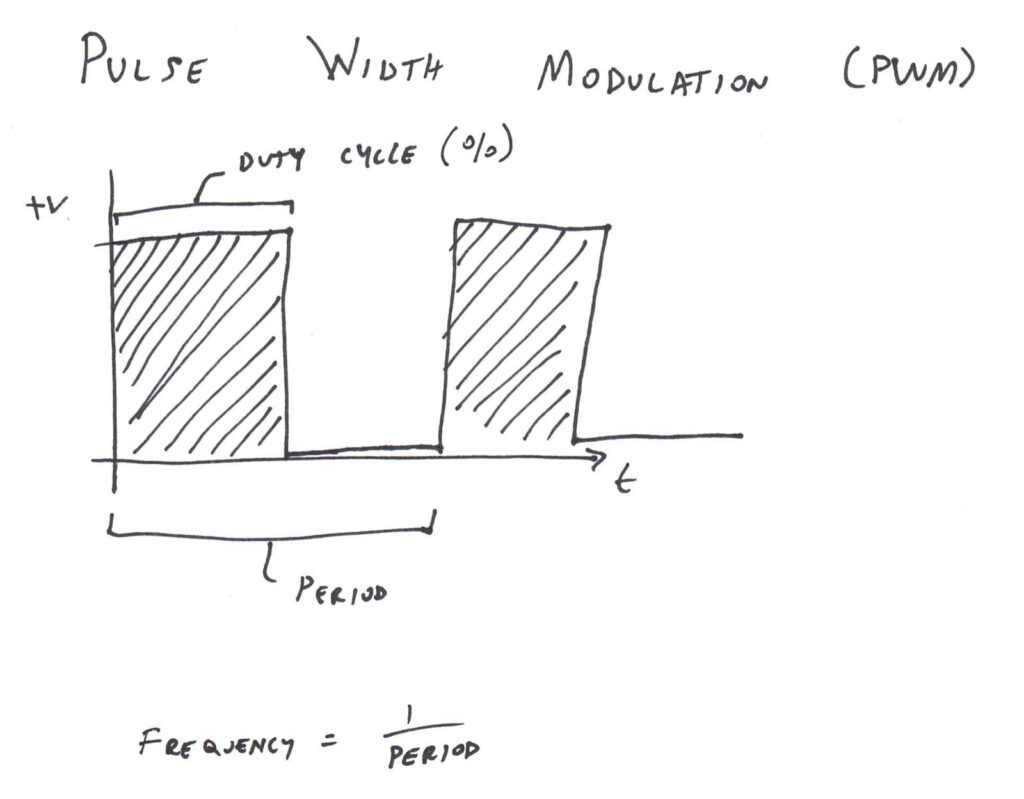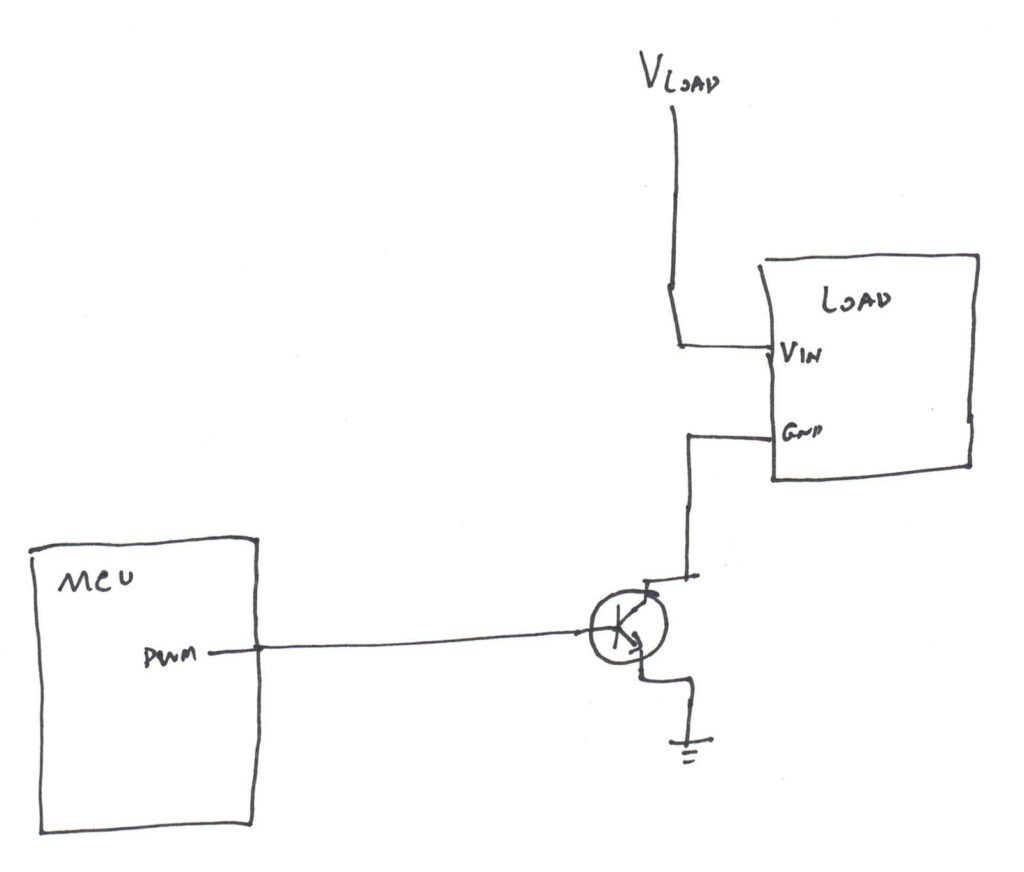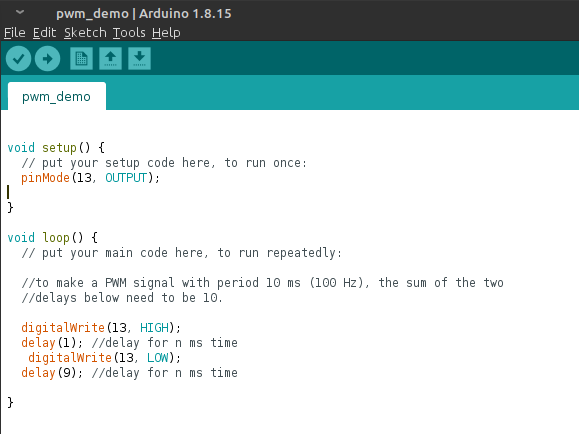Intro to Pulse Width Modulation (PWM)

In this episode, we cover the basics of Pulse Width Modulation (PWM), and use an Arduino with quick-and-dirty code as demonstration.
PWM is useful when we need to modulate a load output (e.g. motor, fan, light) that takes in a specific voltage supply, and just lowering the input voltage may not be appropriate or desired.

Below is the Arduino sketch featured in the video. I copied this Arduino code from my kids’ schoolwork, because I gave them this same lesson earlier in the school year for (computer) science class.
